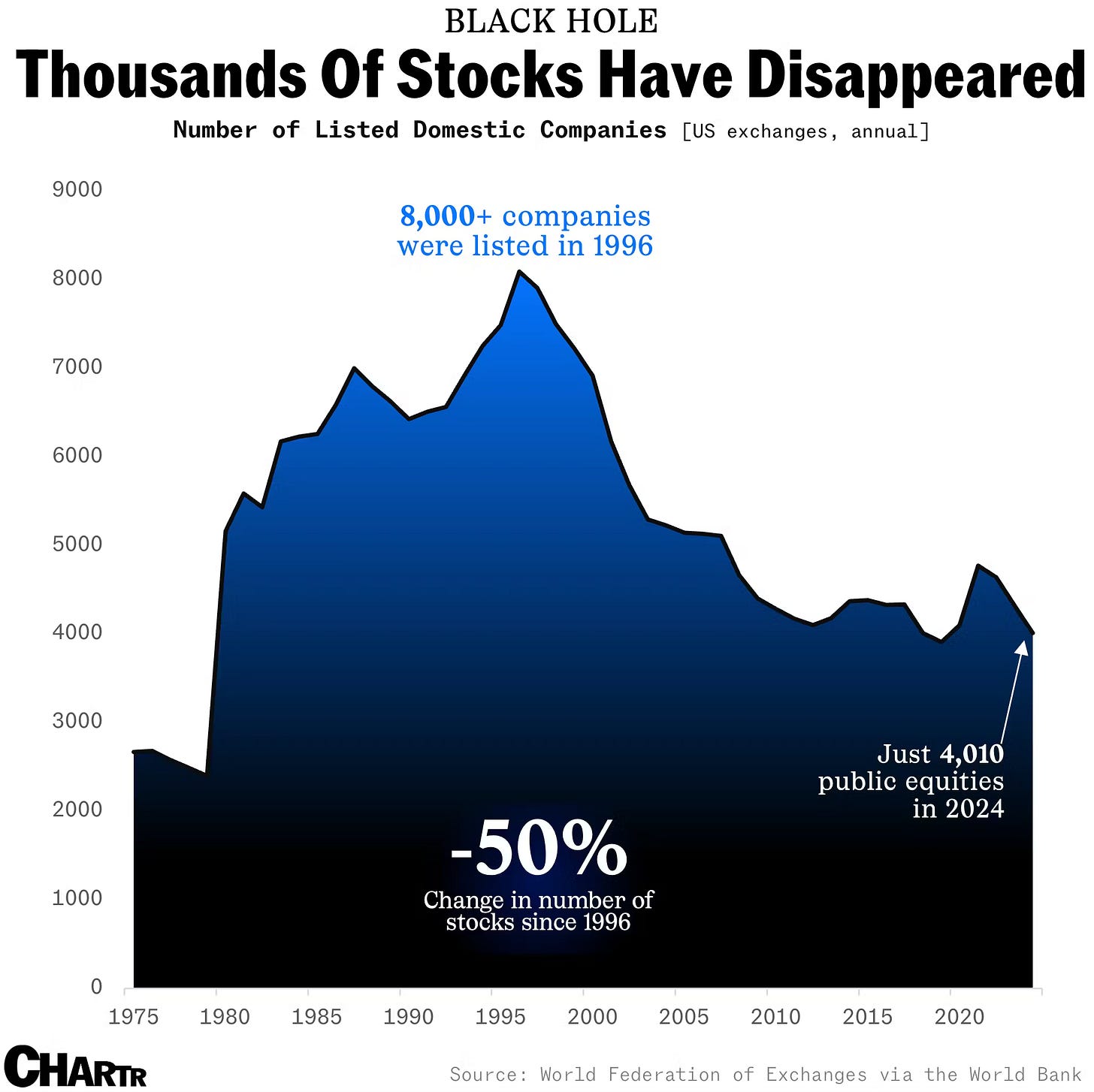America’s vanishing stock market
Five charts to start your day
Electronic Arts just agreed to vanish from the stock market. The largest leveraged buyout in history at $55 billion, and another blue-chip American company disappears behind private doors. Every month, another household name gets bought out, taken private, removed from your reach. The companies your children grow up with won’t be companies they can ever invest in.
Twenty years ago, you could build wealth by picking great businesses and holding them. Today, the moment a company becomes truly excellent, someone with deeper pockets takes it away. EA made $7.4 billion in revenue last year, owns EA Sports FC, Madden, The Sims. Now it belongs to sovereign wealth and private equity funds who’ll extract value in private. The public markets have become a waiting room where companies sit until they’re valuable enough to be stolen.
CHART 1 • America’s vanishing stock market
This chart shows America’s stock market shrinking before our eyes. From over 8,000 companies in 1996 to just about 4,000 today, half our market has vanished. The decline looks like a mountain slowly collapsing, with the steepest drops during the dot-com bust and 2008 crisis. But here’s the shocking part: the numbers never recovered. Even as the S&P 500 hits record after record this year, up roughly 14% at 6,718 points, the actual number of companies keeps falling.
Private equity firms are still hungry. In 2024, deal value for public-to-private buyouts globally reached around $250 billion, far below the “8,000 companies/$1.2 trillion” sometimes cited. New listings have dried up, with just over 200 IPOs in 2024 versus closer to 400 a year in the 1990s. The Magnificent Seven tech giants now represent about 30% of the S&P 500’s value. We’ve lost half our listed companies since 1996, and the pace is accelerating. At this rate, your grandchildren won’t know what a stock market is.
Source: Chartr
If this chart is right, we’re back near levels last seen in the 1970s. Public markets matter because they offer broad, regulated access to ownership. When fewer companies list or stay public, ordinary investors get less exposure to growth. Private markets play a useful role in funding long-term projects, but access is limited, minimums are higher and liquidity is lower. The result isn’t that people are “stripped of rights,” but that participation in much of the growth story tilts toward institutions and wealthier investors.
I have four more interesting charts to share with you today if you hare interested. But, you will have to become a paid subscriber if you do.




